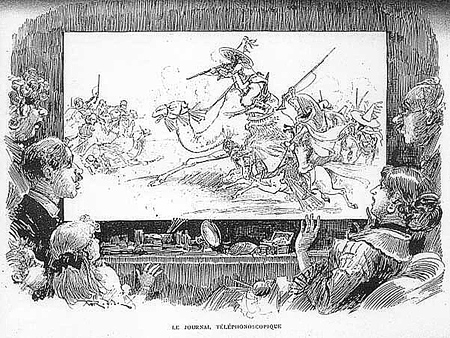On the Verge of...
Uh-oh. The economy has tanked. Voters chose change. U.S. full-power NTSC broadcasting is to cease imminently. Experts are making predictions.
Ignore them.
This much is known about the future: It's unpredictable. As recently as a year ago, the editorial page of The New York Sun predicted that last month's election would be either between Hillary Clinton and Rudolph Giuliani or between those and another New Yorker, Michael Bloomberg. Barack Obama was, to many voters, still "Who?"
As in politics, so too, in broadcast television.
Consider screens, rapidly shifting, it would seem, from picture tubes to LCDs. John Logie Baird, the inventor who first achieved a recognizable video image of a face, said in 1931, "There is no hope for television by means of cathode-ray tubes." Nine years later, he added, "Cathode-ray tubes are the most important items in a television receiver."
Baird's early TV cameras and receivers used motor-driven scanning. The first person to propose an electronic version, Alan Archibald Campbell-Swinton, wrote in 1924, "The real difficulty in [television] is that it is probably scarcely worth anybody's while to pursue it."
IT'LL NEVER WORK

French artist and futurist Albert Robida conceptualized television (and television violence) in the 19th century. Two years later, broadcasting pioneer Lee De Forest weighed in: "While theoretically and technically television may be feasible, commercially and financially I consider it an impossibility, a development of which we need waste little time dreaming."
The following year, AT&T President Walter S. Gifford clarified the matter, saying, "The elaborateness of the equipment required by the very nature of the undertaking precludes any possibility of television being available in homes and offices generally."
Seemingly accurate predictions are no better. Titus Lucretius Carus, who died around 55 B.C., is said to have predicted motion pictures; he didn't. The Repository of the Arts "foresaw" broadcasting in 1821, but the technology of the time would have required solid rods connecting each listener to the sound source.
Even if real, those predictions would be useless. Broadcasting wasn't achieved during the lifetime of anyone who'd read The Repository's "prediction." Movies weren't achieved for almost 100 generations after Lucretius.
Then there was seer David Sarnoff, head of RCA. In 1930, a technical paper called video recording "merely a scientific curiosity." In 1951, when motion-picture expert Raymond Spottiswoode wrote that "Television does not provide storage," Sarnoff predicted VTR development within five years. Amazing?
Prototypical videotape recording had already been demonstrated by 1951, and Sarnoff's prediction was for a successful home unit, which took a quarter-century to market. Sarnoff, furthermore, had predicted nuclear-fission-powered flashlights along with videotape, and in 1935 said, "All that can be done with television, short of actual and studied experience with it in the field, has been done."
French artist Albert Robida has been considered another televisionary, depicting in the late 19th century both video pornography and on-screen shopping, among other things. But those other things included as-yet-unachieved tunneling military transports and flying police scooters.
OK, SO IT WORKS…
Then there were the predictions of our industry's demise. The fall 1931 edition of Radio Design had "The over-enthusiastic televisionists... making their big mistake in thinking that television will repeat the glamorous history of radio broadcasting, when every sign indicates it will not and indeed cannot."
The Listener authoritatively proclaimed in 1936, "Television won't matter in your lifetime or mine."
A 1939 editorial in The New York Times told us, "The problem with television is that people must sit and keep their eyes glued to the screen; the average American family hasn't time for it."
And before his company owned a TV network, Fox chief Darryl F. Zanuck predicted in 1946, "Television won't be able to hold onto any market it captures after the first six months. People will soon get tired of staring at a plywood box every night."
"You could fill a single wall of a house with 3D TV," Philco Engineering Vice President George Crowley was quoted in Forbes in 1967, "and no special glasses involved."
In 1973, three years before VHS, CBS innovator Peter Goldmark wrote that videotape would cost too much for home video.
Renville McMann, president of Thomson-CSF Laboratories, showed rare predictive insight in a 1982 interview. Asked when HDTV would reach homes, he said, "within five years. But if you'd asked me five years ago, I'd probably have said then, 'within five years.'"
Mark Schubin is an engineering consultant whose clients range from the Metropolitan Opera to Sesame Workshop.
The professional video industry's #1 source for news, trends and product and tech information. Sign up below.
